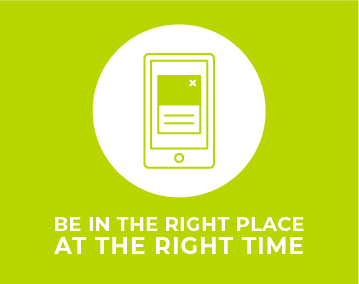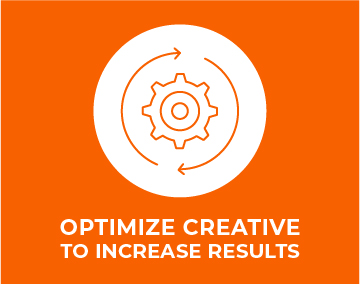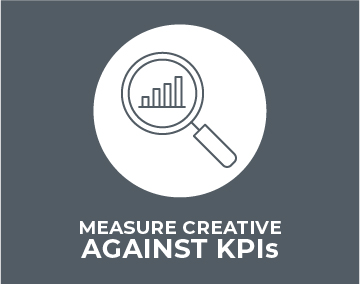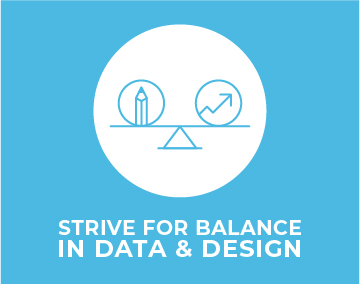Data and Design: When Opposites Attract
02.22.18 · Ashley Bowen Cook
Left brain, meet right brain. Complete opposites. The left side deals with analytics and numbers. It’s systematic. The right side is intuitive, creative and free thinking. Although they are opposites, when each side works together, it creates a relationship that evolves as it learns. The same is true for marketing’s data and design.
When your data and design teams communicate the insights they find, your resulting messaging packs more punch. Your brand becomes more personal to your client, which leads to improved results. Here’s how.

Placement
You want to be at the right place at the right time. This is one of the top reasons why data and design need to work together. Data can tell you where your target markets are most likely to be, how they use their different devices, and what types of content help them make decisions. For design, this intel can help determine which messages and calls-to-action will be the most relevant for the audience. Depending on the type of ad placement, it also informs designers on how they need to take that message across devices and platforms. You might be able to have a seven-word headline on a print ad, but that may not be the best approach for mobile. You only have a moment to capture impatient readers on their smartphones so a better strategy would be to focus their attention on a compelling call-to-action.

Optimization
Any great marketing campaign has some sort of ramp-up period where multiple messages and placements have been tested. The strong survive. Tracking your creative across placements helps you understand which messages deliver the most interest, those that generate the greatest action and those that flop. Data teams should be reviewing and measuring creative against website behaviors and conversions. By sharing these insights with the designers, you’ll find that they usually have ideas on how to optimize the creative to increase results. Not sharing information and keeping it hidden in silos reduces the campaign effectiveness and lessens your return on investment.
Proof

It’s demoralizing when creatives pour their energy into a project only to hear a few months later that “it didn’t work.” More often than not, less-than-stellar outcomes stems from not setting up the right key performance indicators (KPIs) in the beginning.
Measuring creative against KPIs for actions like content downloads, contact form fills, click-to-calls and email sign-ups, tells you how effective that ad was in delivering not just a lead, but one ready to take action. Other metrics around the creative, such as engagement metrics on social ads and viewership on video, tell you how well you are capturing attention and where you might be losing people.
Balance

The key to success between your data and design teams is the ability to parse out the story in the data then create the next chapter. Strive for balance in the conversation. Analysts shouldn’t drill designers with a firehose of numbers, which only leads to analysis paralysis, but should provide context and actionable insights. Designers should be open to learning enough about the data so they know how to ask the right questions and suggest customized creative solutions. Keep the conversation going throughout the campaign.
At our agency, these conversations happen constantly. Some are scheduled. Others happen organically. We review metrics regularly and share how things are going in brief, weekly meetings. To foster greater collaboration, we invite our designers to tap into our analytics tools so they can review the progress firsthand. The goal: generate ideas that lead to ever-better results.
The relationship between data and design teams creates a bond between two opposite thinkers, one that should deliver more success. By measuring the effectiveness of your creative and adjusting as needed, you can turbocharge your campaigns. And, equally important, when your CEO asks how things are going, you’ll have metrics to back up your statements.
